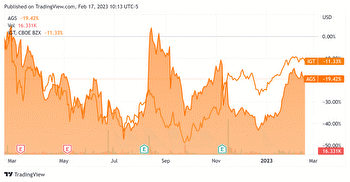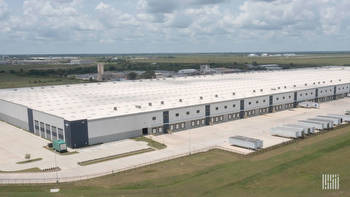The Benefits of Time Slot Management
When it comes to keeping trucks on-time at a warehouse or distribution center, technology plays an essential role. Transportation management systems and real-time visibility solutions have generated the majority of attention for streamlining the process of getting a truck to the dock, loading or unloading it, and getting it back on the road. However, an integral part to this process is the use of time slot management application.
Time slot management helps to organize warehouse resources to prepare for an incoming truck. The warehouse needs to know who is coming and when, which begins with the estimated time of arrival. Beyond that, warehouse workers need updates on what dock the truck is arriving, when the truck is loaded, what papers they will pick up, what needs to be signed, and when they are leaving the warehouse or yard. While time slot management applications work as a stand-alone application, it is more valuable when it is integrated into with other applications on a common platform such as warehouse- and yard management or visibility solutions.
I recently completed a survey with Transporeon on the importance of time slot management solutions and interviewed Transporeon’s CEO Stephan Sieber to get more insight into the trends in time slot management. Here are some of the key findings.
The Network Effect
There are many elements that are out of your control which will impact shipments. It is really just a matter of how much of an impact will be felt. Time slot management applications can help to reduce the impact of changes.
The network effect is at the heart of supply chain transformation. Essentially, the network effect exists when all components of the supply chain technology ecosystem work together to improve the performance of the end-to-end supply chain. To that end, time slot management applications should not operate as a stand-alone solution. While companies can use the technology in a silo, it will only diminish the potential results.
Time slot management, while a critical solution for yards and warehouses, needs to be part of the larger supply chain network, which includes transportation execution, procurement, and real-time data for enhanced visibility. This is where the true power of time slot management exists. By using real-time data for tracking of assets on the move, warehouses can be better prepared for arriving trucks. Depending on congestion or whether a truck is going to be early or late, dock assignments can be adjusted based on the new ETA.
Stephan Sieber highlighted the importance of the network effect on loading and unloading trucks. He pointed out that the process always has at least 2 points: there is no loading without unloading, and there is no unloading with loading. With a complete view on the network of outbound and inbound, you can start to look at time slots like pairs: when you book a timeslot for loading, with in-transit visibility and historical data for transit times, you can look at how it impacts the unloading process. At many times, it is obvious that even at the time of loading, the unloading time cannot be met anymore, which is already past the point where organizations need to know a change will be needed.
If you control the whole chain or network, you can correct such anomalies from the beginning. You can also start to combine inbound and outbound logistics so you can take incoming trucks and reallocate them a loading slot on the outbound side, which is only one step toward smarter transportation allocation. Additionally, if you don’t reallocate the truck to the outbound side by yourself, you have connecting loads waiting for carriers when they are arriving to optimize asset utilization across different transport legs.
The Value of Time Slot Management
When it comes to value, the integration of real-time data with a time slot management application is important. Real-time data can be used for enhanced visibility into a truck’s ETA. The visibility data can be provided via an integration into the carrier’s telematic solution, the carrier’s TMS or an app. The carriers in turn are tracking the ELD devices on their trucks or by a downloadable app that the driver puts on his smart phone. There are a variety of external data streams that also play a role in providing better visibility and improved ETAs.
One of the main benefits of time slot management is the ability to save time, which saves money on labor costs and allows a better utilization of the available driving times. On average, survey respondents reduced wait times by 61 minutes.
Stephan Sieber highlighted what he felt were the top benefits of a time slot management application. First and foremost, better planning and organizing the loading and unloading process leads to improved utilization of assets for shippers and carriers. This helps the warehouse to be ready in time for carriers arriving, whether they are arrival early or late, and reacting appropriately. For carriers, the main benefit is reduced waiting times and less congestion at terminals. Overall, anyone that is around the loading and unloading stations will benefit.
Stephan Sieber also highlighted the areas where he sees time slot management going in the near-term future. For now, and in the next one to two years, he talked about the importance of real-time data. Companies need to use real-time data more effectively to change from a single point of view of only looking at the outbound or inbound to looking at it from a complete network perspective. In the next three to five years, new technologies will become available, such as connected and autonomous supply chains. The yards of the world will be the area that see the impact of autonomous trucks first, as they are able to navigate through the highly congested areas to move from check-in to the loading dock and beyond.
Autonomous trucks are not going to replace human drivers, at not any time soon. However, in the yard, when dock assignments are updated in real-time, autonomous vehicles can navigate through the yard, responding to real-time updates. This allows the driver to perform other tasks that may need to be performed such as filling out paperwork and getting a new route assignment. This can speed up the throughput time of the truck, saving time and money.
Transportation Management Systems





























